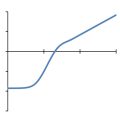Resources
Excel has been my #1 engineering tool since the beginning of my professional career, and I’ve been abusing using it for every project since. While I appreciate when engineering tools are available on the web or with slick GUI’s, nothing quite beats the versatility of an excel sheet. Many of these tools are really just starting points, but should be solid starting points for efficient work. I’ve also included other resource types, including my magnetics design paper, and links to external tools and resources I’ve found useful.
Magnetics Design Tools and Information
I made this Excel spreadsheet to take in user-defined winding dimensions and approximate its resistance vs frequency according to the proximity effect. This is the first step in calculating AC winding losses. Using the harmonic amplitudes of a given current waveform, the losses for each harmonic can be calculated and summed for total AC + DC winding loss.
At this time, the current waveform harmonics are not calculated in this sheet, but its on the to-do list. Some waveforms have simple formulas for harmonic amplitudes, but other waveforms, especially DCM ones, do no have simple solutions.
I wrote this design paper as a practical guide for designing custom magnetics for power electronics. While it doesn’t yet cover ever topic I’d like, its a great introductory and inductor design resource. I hope to expand it greatly, but that will take time.
It starts with the bare minimum of theoretical content, but with special emphasis on the aspects and units that are relevant to design. It then jumps into practical information regarding magnetics materials, and inductor design exercises.
Here is some compiled core data for Magnetics-Inc powder cores and some generic ferrite core shapes. A useful starting point for core selection and further calculations. The ferrite core data is biased towards cores that are available from common distributors, making them good prototyping candidates.
*I have no affiliation with Magnetics, Division of Spang & Co.
(External Link) TDK provides a tool called MDT that aides in magnetic design using their products. I find it most useful for comparing material properties, but it also has other uses.
*I have no affiliation with TDK Corporation


